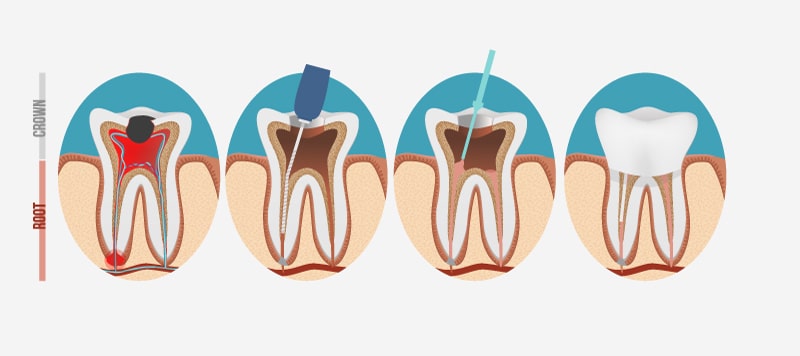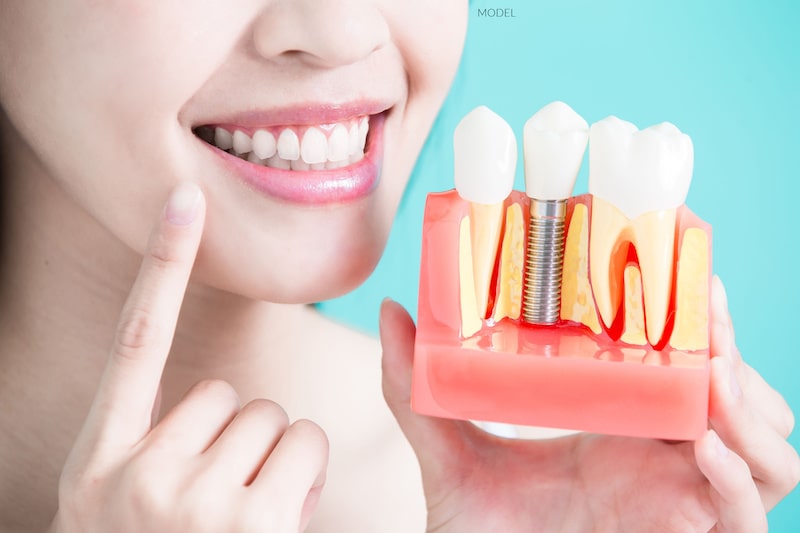3 Minute Read:
While advancements in dentistry have made root canal therapy a simple and safe tooth-preserving procedure, many people become anxious when hearing those words while sitting in the dentist’s chair.

The truth is, if you can save your tooth, this is the wisest choice. The alternative is extraction, and that leaves you without your tooth and tooth root, which is not a healthy state for your bite, gums, and underlying jawbone.
7 Steps of the Root Canal Therapy Process Today
If your dentist offers state-of-the-art dental care, the following seven steps will be followed to repair your tooth.
- It starts with imaging (X-rays & CT scans) to assess the infected tooth.
- A local anesthetic (i.e., Novocaine) is gently administered.
- A dental dam is laced to protect the mouth and prevent bacteria from entering the tooth receiving treatment.
- A small hole is made in the crown of the tooth.
- The damaged dental pulp is removed entirely, and the remaining tooth structure is cleared of infection.
- The canals that once housed the pulp are then filled with gutta-percha, a rubber-like biocompatible substance, and sealed.
- Finally, the treated tooth will receive a professionally color-matched ceramic crown to restore its full function and aesthetic.

Living With Missing Teeth
The more missing teeth you have, the higher your risk of resorption becomes. This process involves the weakening of the jawbone and is caused by a lack of stimulation usually provided by your tooth roots. When left untreated, this can lead to losing additional teeth.
The ultimate result of resorption is the loss of all teeth and thinning of the jawbone that causes the face to change shape, leading to a prematurely aged appearance.
Replacing Teeth
When you replace your teeth with dentures, the roots remain absent, and resorption will continue to progress.
The healthiest option is to opt for dental implants to replace each missing tooth.
However, implant-supported bridges or dentures can be an excellent alternative.
3 Steps of the Dental Implant Process
Receiving dental implants consist of three basic steps:
- Titanium posts are inserted into the gum and bone.
- The posts are allowed to integrate with the bone over two to four months.
- The dental crown is securely attached to the posts (or a custom denture).
If you have many missing teeth, resorption may have already weakened your jaw, and you may require gum and bone grafts to strengthen the bone before having the posts inserted. This can add significant time to the process.
How Do I Know if I Need a Root Canal or Tooth Extraction
If you are experiencing dental pain, chances are decay has reached the nerve roots, and you may indeed require root canal therapy. Only a visit to your dentist can determine this. The longer you wait, the worse it will get, and you may end up needing an extraction.
Comprehensive Dental Care in San Diego
La Jolla Cosmetic Dentistry and Orthodontics is your state-of-the-art, one-stop dentist in San Diego. Your convenience and the health and beauty of your smile are important to us, and we work hard to meet the unique needs of our diverse clientele.
Dental emergency in San Diego, California? Call us now at (858) 295-0603. We can get you back to your life in no time!

